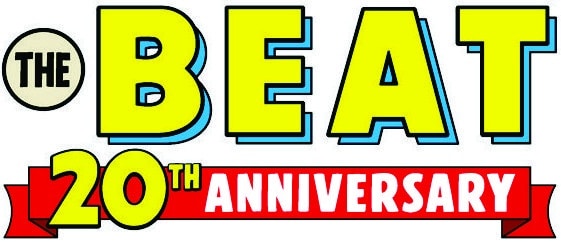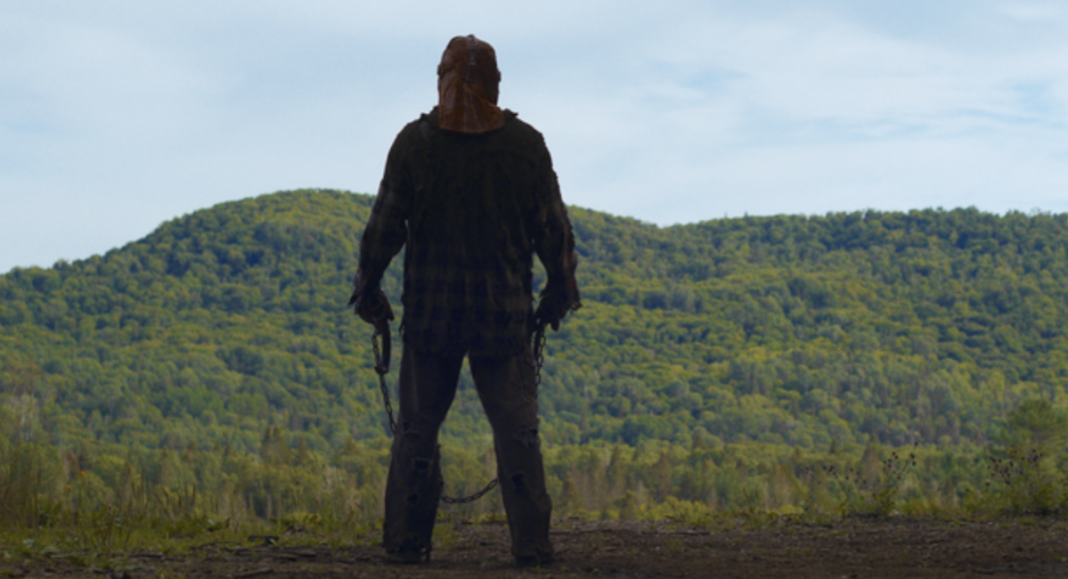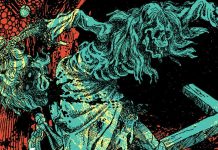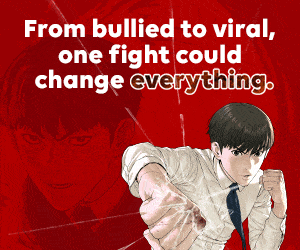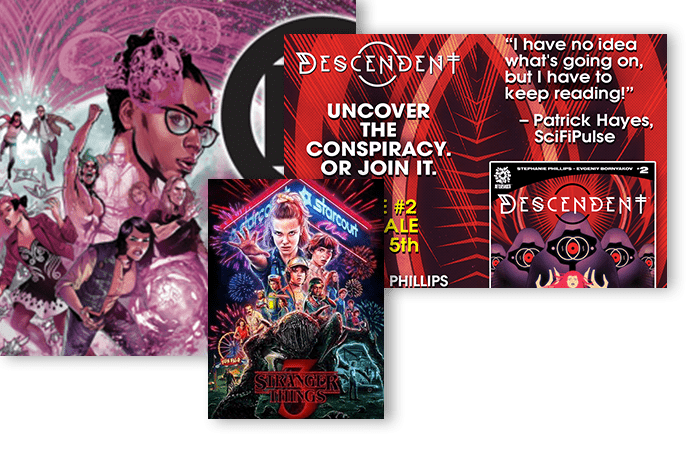The only way to talk about In a Violent Nature is to discuss how polarizing this film will end up being. Like Skinamarink (which The Beat included on its Best Horror of 2023) last year viewers will either leave theaters elated by its unique viewpoint and direction, or think the whole film is a gimmick unworthy of repeat viewings.
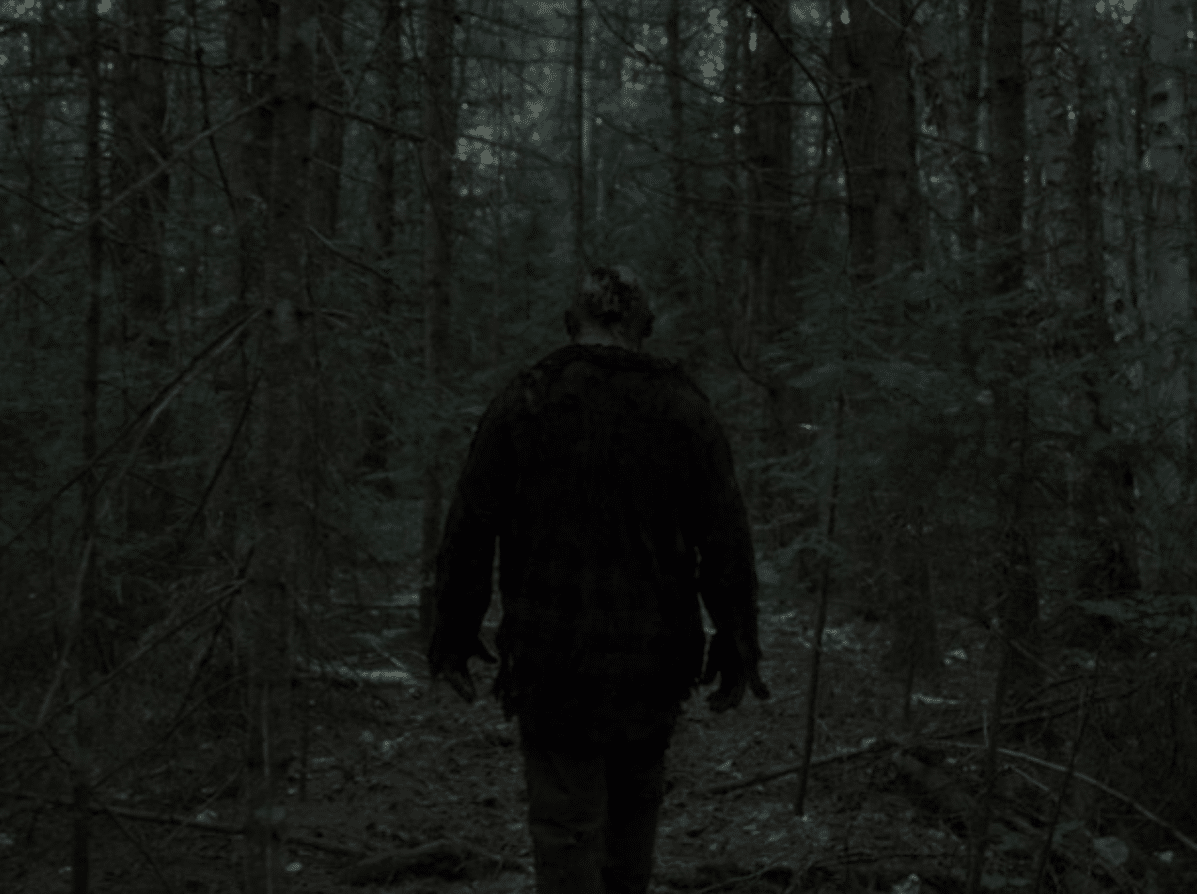
It’s not that it doesn’t fulfill the requirements of a slasher movie, this is a slasher movie in the literal sense as it features some brutally violent moments, making it one of the most graphic slashers in ages. When it gets to the gore and violence, filmmaker Chris Nash doesn’t hold back at all.
What will likely cause the most debate online and in person is how the writer and director handle the narrative. Nash spends the majority of the 94 minute runtime following a massive supernatural killer named Johnny (Ry Barrett) stalking prey in a forest from behind, making this a film from the point of view of the killer. An easy joke to make would be that this is Friday the 13th (Jason’s Version).
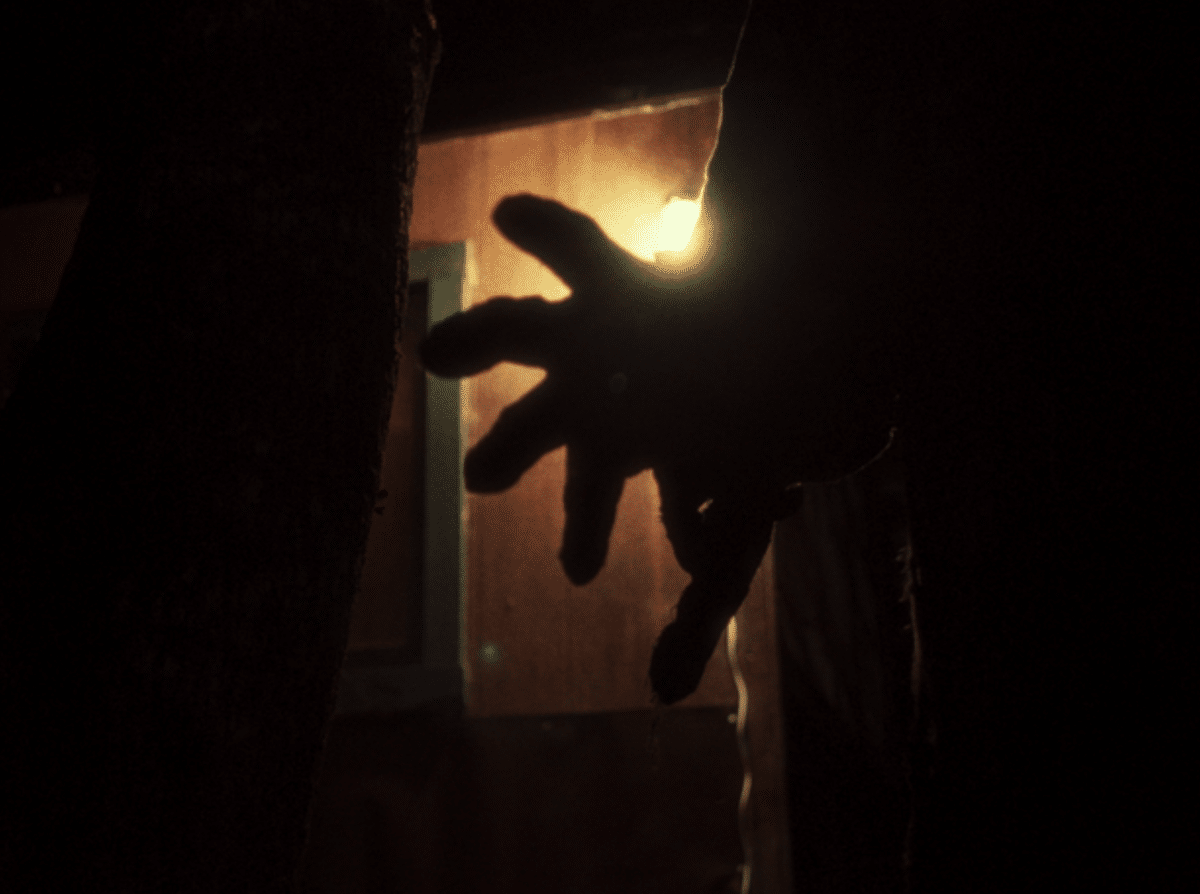
As a result of the perspective, there is hardly a coherent plot or overarching narrative in the film, with the events happening around the Johnny as he moves through the forest with no common thread to tie them together. His eventual victims scramble around unaware of his presence until he murders them and both the viewer and audience end up learning the backstory of the killer mostly through victim dialogue. Only at the final act of the film, do we get substantial dialogue between characters that lasts more than two lines total.
For most people, this probably sounds incredibly tedious, since the film is mostly composed of long tracking shots of Johnny from behind and there’s only the ambient noise of the forest with no score. With that kind of description, it sure sounds like yet another example of “elevated horror” alongside many such examples over the years.
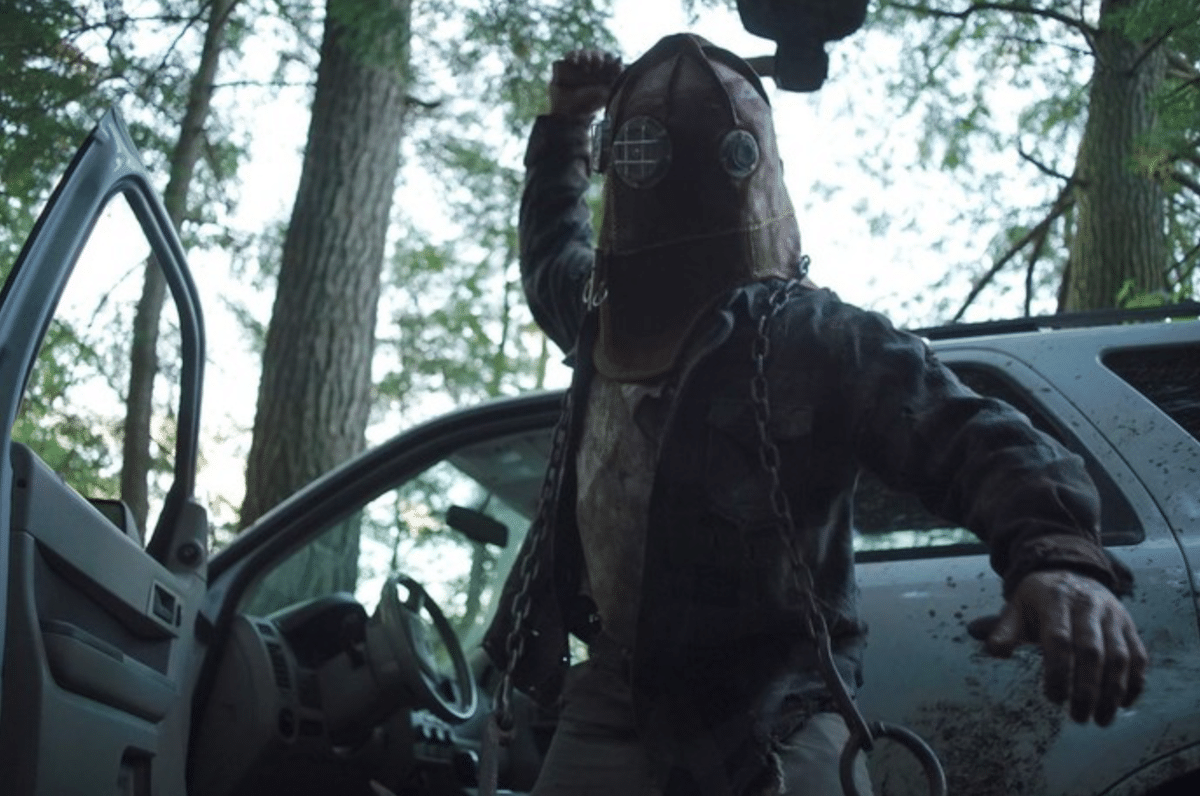
However, saying that In A Violent Nature is a gimmick or “elevated horror” does a disservice to first time writer and director Nash, who is a person in total command of their craft in this feature. The effort put in is meant to remind viewers of the power of crafting a great and visually arresting scene. The long takes, static images, and lack of a score only drive the perpetual feeling of uneasy dread, yet this film also surrounds itself in death. Whether it’s the buzzing of flies in the ambient noise or lingering on the body of a victim just a little too long, Nash also reminds his audience death is everywhere.
You also have to consider that most slasher films revel in the kills and glorify the violence, and each kill is a set piece that tries to one up what came before in terms of graphic visuals. When this happens, you’re following the victims to their deaths and most directors want you to have a little fun with the way people die for maximum entertainment.
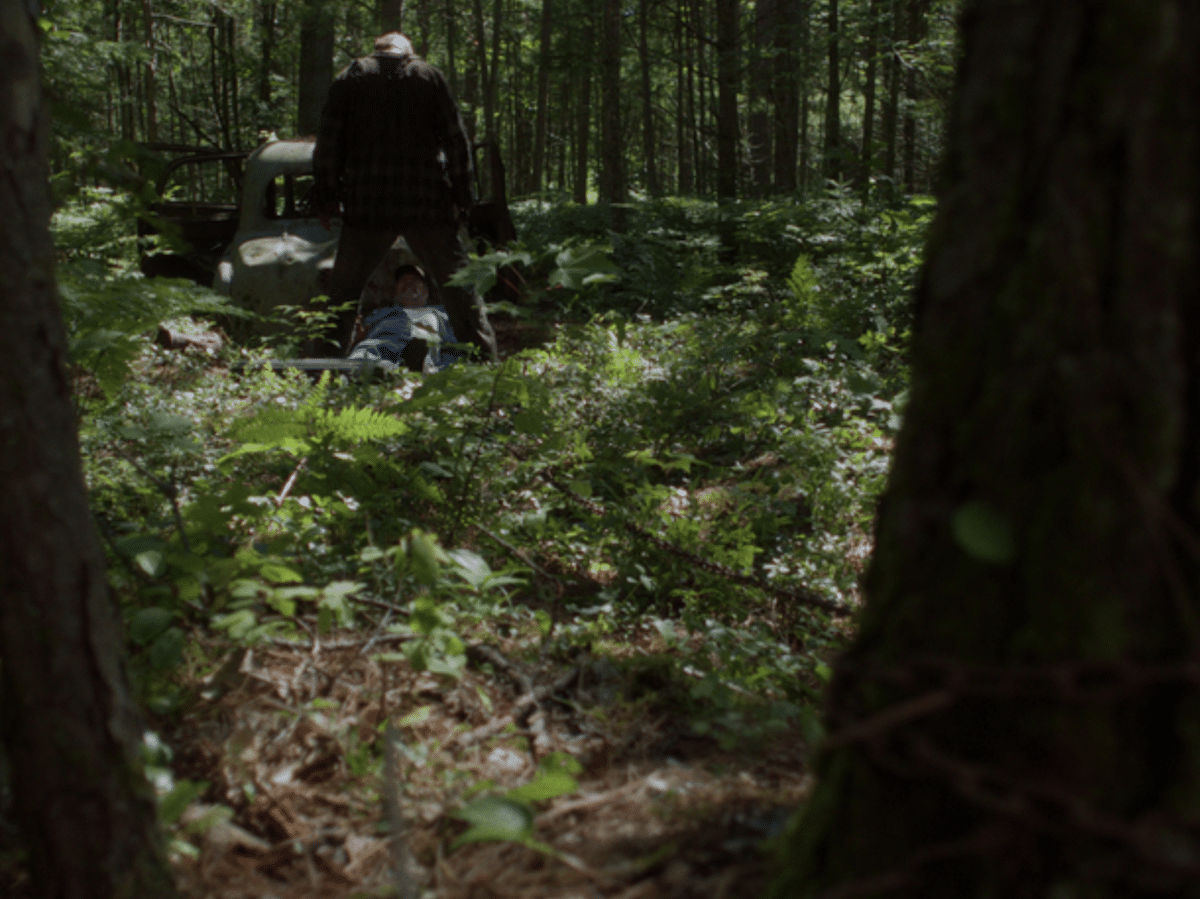
Imagine instead of following victims like in every other slasher film, you follow the killer, who knows the woods and can track their victims easily. You watch as they plan, prepare, and then execute horrific violence with no remorse. Now you’re forced to truly consider this scene not as an entertaining set piece in a film, but as an act of grisly violence with intention behind it.
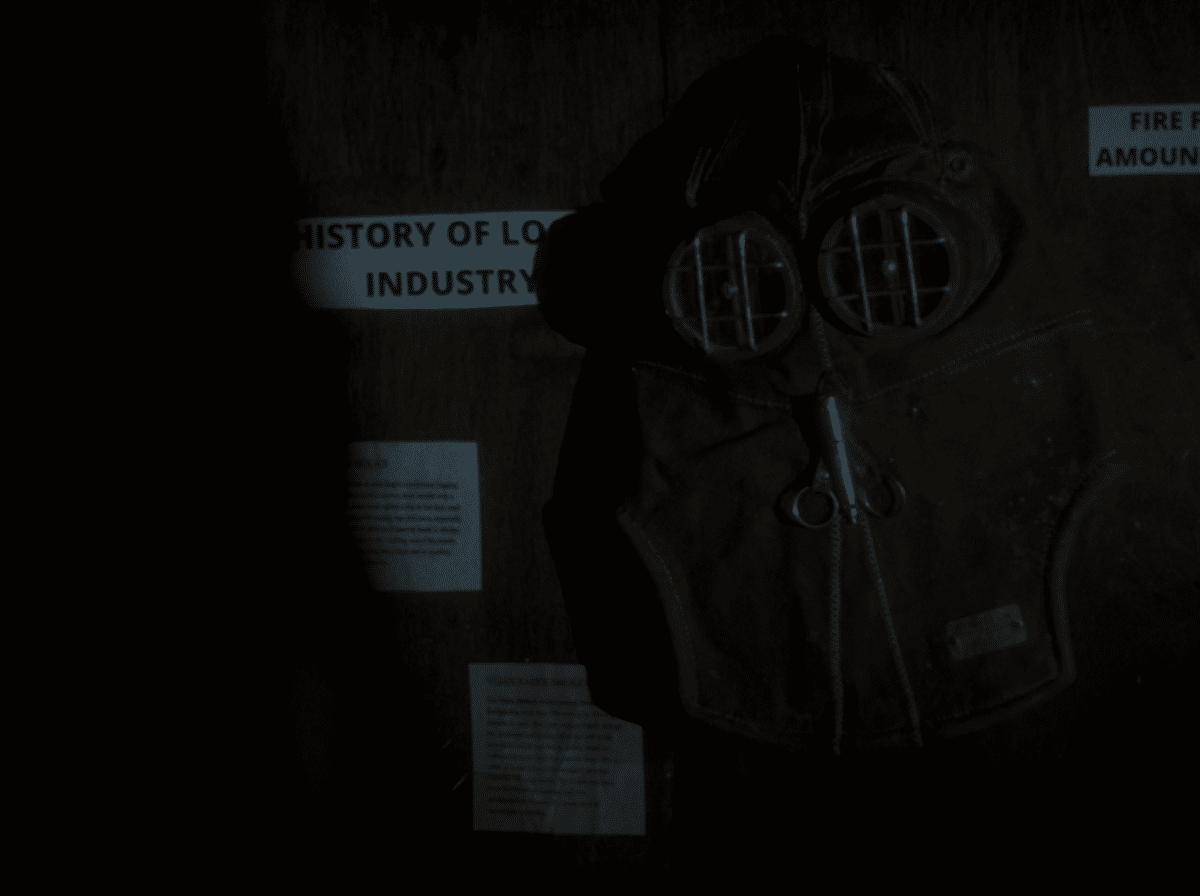
This isn’t a comfortable thing for an audience or a viewer to consider at all and Nash knows it, with the film coming off more like a documentary with a disaffected lens, walking through the forest and following a predator. He forces the viewer to understand this horrific individual with only the film’s visuals. There’s no score because a score would directly manipulate the audience’s feelings and opinions. This film lives without judgement and that’s what makes it so scary.
Horror as a genre has become so formulaic that when something like this comes along, it’s very easy to categorize it as a gimmick. However, Chris Nash uses the considerable tools of filmcraft to put audiences in uncomfortable and very alien territory. This is a film that confronts with you the animalistic, indifferent nature of evil and forces you to acknowledge it, regardless of how you or the audience feel.
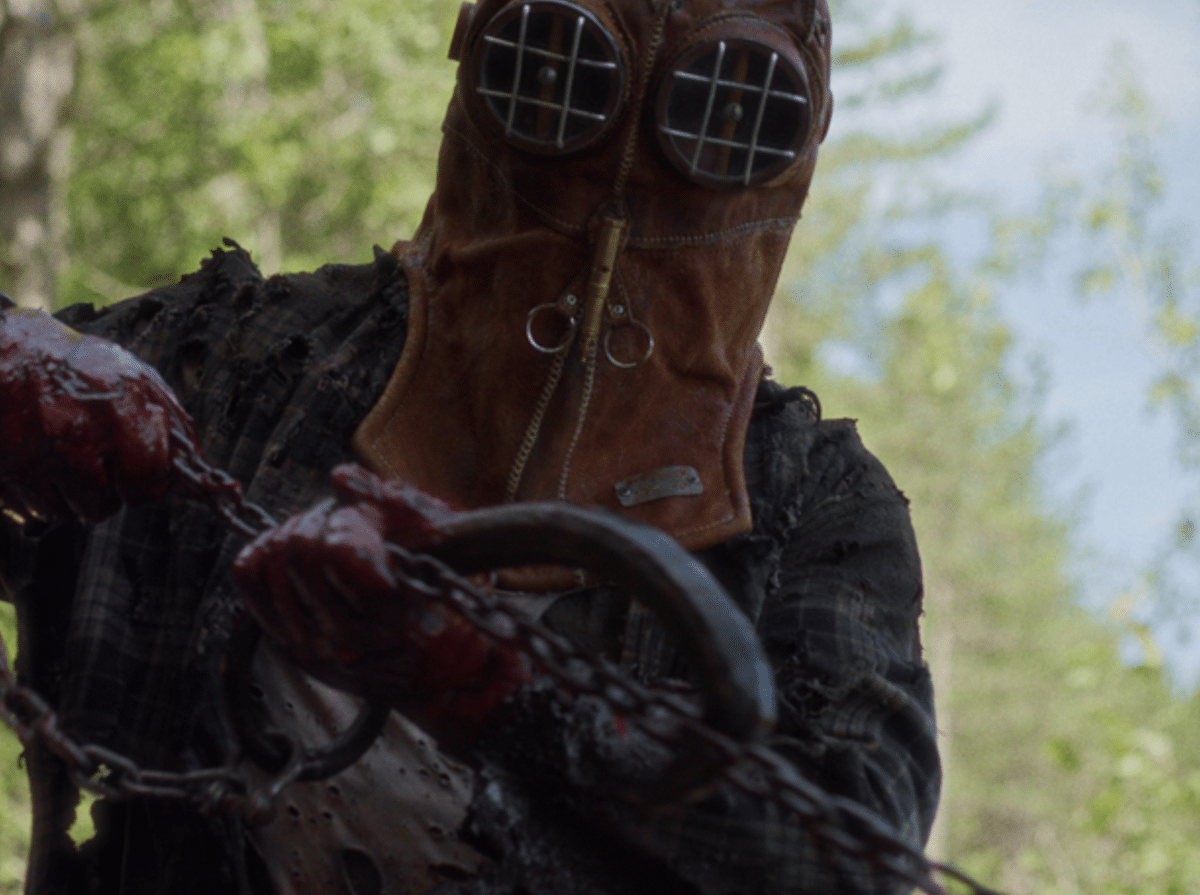
In A Violent Nature is currently in theaters and will stream on Shudder later this year.
